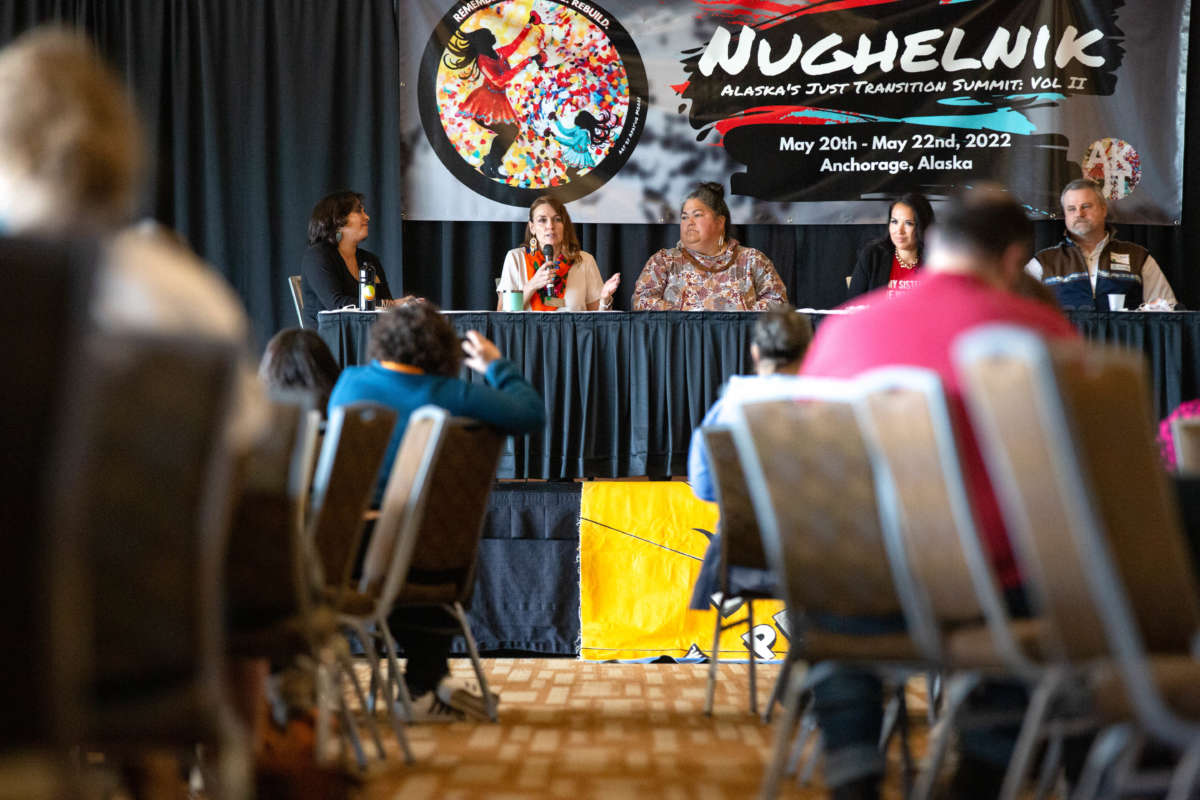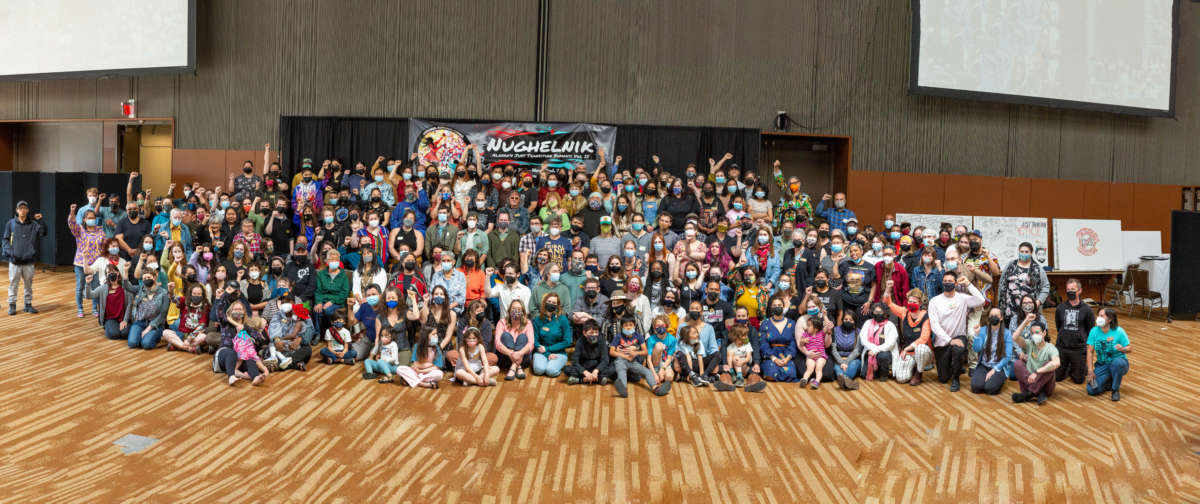Redefining the Working Class
Beyond white men in hard hats

© Keith Dodds
Shamira Ibrahim
THE POSTMORTEMS WERE SWIFT and decisive. Despite winning the popular vote, Hillary Clinton had lost key Rust Belt States. Which meant she had been rejected by working-class voters—those white guys in hard hats. This analysis could be indirect or straight-on. Mark Lilla wrote on the New York Times op-ed page that Clinton’s loss was a rejection of “identity liberalism.” By acknowledging the interests of traditionally disfavored groups, she turned off “the white working class and those with strong religious convictions,” Lilla argued. Two days after the election, Joan C. Williams, author of White Working Class (2017), wrote for the Harvard Business Review that Clinton lost because blue-collar whites saw in her “the dorky arrogance and smugness of the professional elite.” Even Bernie Sanders, the so-called paragon of coalition building on the left, found himself deferring to the public narrative. “It is not good enough to have a liberal elite,” Sanders said on a CBS This Morning interview less than a week after election day. “I come from the white working class, and I am deeply humiliated that the Democratic Party cannot talk to where I came from.”
There was nothing new in this critique of a losing Democratic campaign. When Ronald Reagan defeated Walter Mondale, a labor-friendly former vice president from Minnesota, in 1984, a series of focus groups led by the pollster Stanley Greenberg zeroed in on working-class voters in Macomb County, Michigan, who Greenberg famously labeled as “Reagan Democrats.” As one reporter noted at the time, Greenberg “found that these working-class whites interpreted Democratic calls for economic fairness as code for transfer payments to African Americans.” The New York Times reported a few days after the 1984 election that exit polls showed Mondale winning 90 percent of the African American vote. Yet Mondale apparently had been unable, in the Sanders formulation, to “talk to where I came from.”
There’s no dispute that general working-class support for Democrats has fluctuated from election cycle to election cycle. The one constant, though, is that “working-class” is almost always used in the media to suggest white, male workers. The representative Reagan Democrat was, literally, a white autoworker in Michigan. Even when the white prefix is used to indicate a specific research interest—as in Joan Williams’s White Working Class—there is still an unspoken assumption that this is the part of the working class that matters most. White workers were supposedly neglected in the 2016 campaigns, and so we ended up with Donald Trump instead of Hillary Clinton.
Last year, I spent time talking to workers involved in the Fight for $15 campaign. One of them, Deatric Edie, a then-forty-two-year-old mother of four in Florida, was working three jobs at fast food franchises, at hourly wages of $11, nearly $10, and $8.65, respectively. “My whole life is dedicated to working,” she said. The American labor force is teeming with workers like Edie, but when they get media attention, they are more often classified as “the working poor” than as simply the American working class. Few reporters assigned to dig into working-class sentiment would turn to someone like Edie—a Black woman who has suffered from extended housing instability—as a typical voice of working-class discontent, despite the inherent understanding that people like Edie have about the ways that class, gender, and race interact to subjugate the most marginalized communities in the working-class service industry, and despite their overrepresentation in that field. “They said that ‘Black Lives Matter,’” Edie remarked to me. “But they’re still not protecting us. The health and economic security of Black workers, our voices, are still not being heard.”
The United States, however, is much closer now than it was in the era of the Reagan Democrats to a transformation, a point at which the working class will no longer be predominantly white. According to Census Bureau projections, we are still about twenty years away from the tipping point when the population as a whole is more than 50 percent non-white. But we are about ten years away from the point where people of color will represent a majority of the working class, according to a 2016 report by Valerie Rawlston Wilson of the Economic Policy Institute’s Program on Race, Ethnicity, and the Economy. Defined in this context as workers with less than a bachelor’s degree, in 2013, about two-thirds of the entire workforce was “working class.” But the white share of that bloc is falling and is likely to dip below 50 percent by 2032.
Business Bites Back
The diminished status of the non-white working class is not a matter of accident, but of design. Take, for example, the National Labor Relations Act, also known as the Wagner Act, which came into law in 1935 as part of Franklin D. Roosevelt’s package of New Deal reforms. A foundational piece of American labor legislation, it granted the right of workers to form unions and engage in collective bargaining—and yet certain labor sectors were specifically excluded, including agricultural workers and domestic workers. Field workers were predominantly Black, of course, and domestic workers were heavily Black and female. As a result, the pipeline for a growing labor movement remained siloed by race, gender, and class.
The diminished status of the non-white working class is not a matter of accident, but of design.
Nevertheless, by 1945, union membership peaked at over 35.4 percent of non-agricultural employment across labor sectors. There were big wins in the industrial working class with the formation of labor federations such as the Congress of Industrial Organizations (CIO), the American Federation of Labor (AFL), and the United Auto Workers (UAW), giving labor enough political capital to become a linchpin in the national political process. Operations such as the Committee on Political Education would later be engaged in voter registration for union members; in-house analysts would help form policy recommendation and research.
A few key moments not only stemmed the tide of these gains in power from within the ranks of the labor class but stymied efforts of Black and brown communities to build solidarity with the white working class. The National Association of Manufacturers and the U.S. Chamber of Commerce lobbied successfully for the Taft-Hartley Act, which passed in 1947 and made it much tougher for labor organizing and unionizing. The Act allowed states to pass right-to-work laws, permitting non-union employees to join a unionized workplace, as well as granting employers the right to spread anti-union sentiment during elections. The prospect of employees benefiting from unionization without having to pay dues made voting for unionization a much riskier gamble. Employers were not beholden to accuracy in their efforts to spread dissent, allowing them to imply that jobs or entire industries might collapse as a result of unionization. Sympathy strikes were also banned. Most aggressively, the bill required that union officers affirm they were not members of the Communist Party, removing some of the more radical elements of the labor movement that were strong supporters of women’s rights and racial solidarity.
The business establishment saw the political threat that a multiracial, multiethnic labor movement could pose. “The power of unions transcends the collective bargaining done on behalf of their workers,” explains Tamara Draut in Sleeping Giant: How the New Working Class Will Transform America (2016). “The real power is that through union dues, the labor movement can amass significant resources to engage in voter turnout, agenda setting, and issue advocacy, all on behalf of ordinary Americans.” She continues:
It’s that amassing of political power that is so threatening to conservatives and corporate America. After all, big labor has been responsible for advances in our day-to-day lives that still make conservatives livid: Medicare, Medicaid, and, yes, Obamacare too; unemployment insurance; Social Security; the forty-hour workweek; pensions (what’s left of them, anyway), and the minimum wage.
“In every presidential election between 1948 and 1964,” Draut notes, “the Democratic candidate launched his campaign with a Labor Day rally in Detroit’s Cadillac Square.”
By the 1970s, the momentum of the labor movement had stalled, while the anti-war movement and the civil rights movement had made some in the white working class restive. The Republican Party was poised to drive a wedge between groups of workers. One artifact, known as the Powell Memo, articulated in 1971 the tactics by which corporate leaders would marshal their resources against what the memo called the “Attack on American Free Enterprise System.” It sketched a playbook for businesses to imitate the AFL-CIO by asserting their political power, especially through the national Chamber of Commerce. “Strength lies in organization, in careful long-range planning and implementation,” wrote Lewis Powell, who would later become a Supreme Court Justice. Powell called for financing through the joint effort of national organizations to fund pro-business viewpoints in public school curricula, on college campuses, and in the media. He also asserted that “the judiciary may be the most important instrument for social, economic, and political change.” This guidance was well-received: the presence of corporate lobbyists and political action committees boomed throughout the 1970s and 1980s, dramatically transforming the political process. Since then, Supreme Court decisions like Citizens United v. Federal Election Commission have only buttressed that power, paving the way for the first SuperPACs in 2010. According to Draut, big business outspent unions in the 2012 elections by a margin of fifty-seven-to-one.
Out of Sight, Out of Mind
The big business counterattack might have been halted by an ever-strengthening coalition of different racial and ethnic members of the working class. But this is where the long-prevailing refusal of the American power elite—in law, government, and the media—to see and respect nonwhite workers was crucial.
The business establishment saw the political threat that a multi-racial, multi-ethnic labor movement could pose.
“We’ve never been seen as working class—that our work is valued—it’s always been that our work is required,” Celeste Faison, director of campaigns for the National Domestic Workers Alliance, told me in a recent phone interview. “To exclude Black and brown voices from the working-class conversation is to deny that they are a part of the electorate.” When imagined as mostly white, the working class gets the benefit of being buoyed by economic policy, entitled to a decent quality of life; the working poor, imagined as nonwhite, are the subject of endless case studies in sociology classes, with an emphasis on their failures in capability. As Draut puts it in Sleeping Giant, “It’s much easier to go to battle for ‘Americans who did all the right things’ and got the rug pulled out from under them than it is to stick up for the hardworking, hard-luck, drew-the-short-end-of-the-stick population who too easily remind us that the American dream is more ephemera than enduring reality.”
“I do think we have to have a conversation around what is traditionally seen as white-collar work versus blue-collar work,” Faison added when we spoke, “who does those different kinds of jobs, how they’re valued, and who we think about when we’re talking about blue-collar workers.” We’ve seen a transition in working-class jobs since the deindustrialization era of the late 1970s through the 1990s, when free trade agreements such as NAFTA made it advantageous for corporations to move their major factories out of urban centers and into other countries, often in the Global South. By 1987, only 27 percent of Black workers were employed in industrial jobs, according to Draut. “When the working class shifted from ‘making stuff’ to ‘serving people,’ it brought with it lots of historical baggage,” she writes. “The long-standing ‘others’ in our society—women and people of color—became a much larger share of the non-college-educated workforce. And their marginalized status in our society carried over into the working class, making it easier to overlook and devalue their work.”
The gains made by Black men and women after the civil rights movement began to integrate workspaces but maintained the racial hierarchy; white professionals moved up the managerial ladder. “Securing wage growth and greater equality by both class and race calls for sustainable working-class solidarity that supersedes the racial and ethnic tensions present among all groups of people,” writes Valerie Wilson in her 2016 EPI report. “Getting to that point requires honesty and a collective reckoning about race, white privilege, and institutional racism, with respect to the costs and benefits to each of us.” Similar appeals were made in the most hopeful moments of the civil rights era. Black labor leaders such as A. Philip Randolph and Bayard Rustin in 1966 urged a multiracial coalition in support of labor investments, such as those outlined in the Freedom Budget for All Americans. “The tragedy is that the workings of our economy so often pit the white poor and the black poor against each other at the bottom of society,” Randolph wrote in the introduction. “We shall solve our problems together or together we shall enter a new era of social disorder and disintegration.”
The Republican game plan of the 1970s and 1980s—when Nixon’s “Southern Strategy” melded into the GOP’s appeal to “Reagan Democrats”—curtailed any opportunity for reconciliation, leveraging the tensions of school integration and affirmative action to cleave the working class along racial lines. “The Republican Party used the detachment of white elites from the implementation of integration to charge the Democratic Party with liberal elitism: championing the rights of minorities from a lofty perch on which they remain unaffected,” Draut explains. They promoted the idea of reverse discrimination, “arguing that better-qualified whites were losing jobs to less-qualified minorities. It was a cynical and ugly ploy, but it worked.” Thus, the term working class became racially loaded.
Soon came the racist dog whistles that are now fully integrated into the American narrative—associating nonwhites with criminality and terms like welfare queen. “The term welfare queen became a not-so-subtle code for ‘lazy, greedy, black ghetto mother.’ The food stamp program, in turn, was a vehicle to let ‘some fellow ahead of you buy a T-bone steak,’ while ‘you were standing in a checkout line with your package of hamburger,’” writes Michelle Alexander in the highly lauded The New Jim Crow (2010). “These highly racialized appeals, targeted to poor and working-class whites, were nearly always accompanied by vehement promises to be tougher on crime and to enhance the federal government’s role in combating it.”
White America was open to these appeals, ready to accept that the Black working poor were not only asking for but stealing something that did not belong to them. They were interlopers in the working class, a separate group of workers than the white industrial laborers who toiled away to help build this great nation. The boundaries between them needed to be monitored and enforced by all means at their disposal, including mass incarceration, Clinton-era claims about “superpredators,” and the subsequent passage of the 1994 Crime Bill.
By the time Barack Obama came along in 2008, winning almost the entirety of the African American vote, according to exit polls at the time, while also appearing to win back some of the “Reagan Democrats,” the Republican business establishment saw an existential threat. When big business grabs for the levers of power, screeds on personal responsibility always come to the forefront, the implication being that food, health care, and housing are luxuries outside of the guarantees of life, liberty, and the ever-elusive pursuit of happiness. “Demography is not destiny but demography will have an impact on the future of the American economy, politics, and social infrastructure,” Valerie Wilson writes.
As the United States continues to undergo this demographic shift, we have to think in terms of big structural and policy changes that help to advance greater equality, expand opportunity for all, and yield universal benefits to the economy. This includes empowering workers to secure gainful employment, bargain for higher wages, and achieve racial and gender pay equity; closing gaps in student achievement and access to college; protecting voting rights; and enacting immigration and criminal justice reform.
Essential Now, Exploitable Always
Since the financial meltdown of 2008, a new uprising has been struggling to emerge. While the financial crisis did not spawn the transformations to our capitalist system that the Great Depression did—when labor unions fought for a revised social contract between the government, businesses, and workers that ultimately became the New Deal—recent years have seen a significant uptick in anti-capitalist activism and labor organizing, from movements like Occupy Wall Street, to the ongoing fights to unionize major corporations like Starbucks and Amazon, to the Fight for $15 and a Union, which started in 2012 with two hundred fast food workers going on strike outside of a McDonald’s in Manhattan.
When big business grabs for the levers of power, screeds on personal responsibility always come to the forefront.
“I joined the movement and we started talking amongst each other in the workplace, learning each others’ stories, and we had more in common with each other than we did apart,” Terrence Wise recently told me. He is a second-generation fast-food employee who has been organizing with the Fight for $15 for the last nine years. “All of us were making low wages, no benefits, struggling to feed our family . . . our strength was in our numbers and coming together, telling our stories.”
The Covid-19 pandemic provided even more visibility to working-class issues, with urgency placed on labor protections for essential workers. “We did make some gains through this framing of ‘essential work,’” Faison agreed, adding the key caveat that “we have to make sure that essential work is not a vanity phrase but is a call to make sure that those workers have the most amount of protections possible because they are the most vital parts of the working class.” In conversations with Wise, he noted that all gains obtained for essential workers, from increased protective equipment to hazard pay, were the result of collective direct action at the labor level—and are subject to the whims of the corporation should attentions shift. “We need to have access to a union. That’s bargaining power, you know, where we can set the standards, whether it’s wages, working conditions, safety,” Wise explained. “Until we have a true institution, a union, something that can assure that we can fight and win those things and gain those protections, we’re just at their will.”
As costs of living continue to accelerate beyond many workers’ wage increases and as businesses continue their inevitable backlash against union drives, it will become even more critical for our conception of the working class to shed the white supremacist artifice of its past in favor of a multiracial coalition. The last several decades have seen codified frameworks built to do exactly the opposite; the challenge will lie not only in nullifying them but also in shattering an entrenched oppositional structure that uses racial division to minimize solidarity and keep nonwhite workers on the margins. “This new working class faces a triple-headed challenge: overcoming entrenched corporate power, defeating the economic hegemony of neoliberalism, and tackling pervasive and stubborn racial, ethnic, and gender oppression,” as Tamara Draut puts it. “The first challenge to toppling such powerful and historical injustices is making visible the cause and the claim.”
That happened in a stunning way this spring. In an election overseen by the NLRB, workers voted to unionize at Amazon’s JFK8 fulfillment center in Staten Island, New York. Christian Smalls—a deeply empathetic Black man sporting a do-rag, gold chains, and gold grills to match—would become the leader of the behemoth’s first recognized union in America. Smalls had been fired by Amazon in 2020 after he led a walkout in protest of pandemic working conditions. But he kept organizing with warehouse workers on the inside, forming the Amazon Labor Union alongside his former coworker Derrick Palmer, despite getting no official backing from any national unions. Following tried-and-true American practices of union busting, Amazon targeted Smalls, expecting his role to create dissension within organizing ranks; the company had assessed him as “not smart or articulate.” Instead, with his colleagues, he successfully built a coalition over the next two years. “We want to thank Jeff Bezos for going to space, because while he was up there, we were organizing a union,” Smalls said on the day the ALU won its election.
The prospects for a united working class are always uncertain, but transformative change is both viable and visible. It may look something like previous generations’ labor struggles, retooled for the modern titans of contemporary global capitalism. But it will also look different, as it did in Staten Island, where neither Amazon’s leaders, nor its anti-union consultants, nor people in the mainstream media and established unions, seemed capable of recognizing the face of a new working-class hero. A comment made by A. Philip Randolph in the 1966 Freedom Budget speaks directly to today’s working class, mostly unorganized, some of whom have to work multiple jobs to pay the bills: “In these United States, where there can be no economic or technical excuse for it, poverty is not only a private tragedy but, in a sense, a public crime. It is above all a challenge to our morality.”









